By Marianna Cerini, CNN
Thu August 31, 202
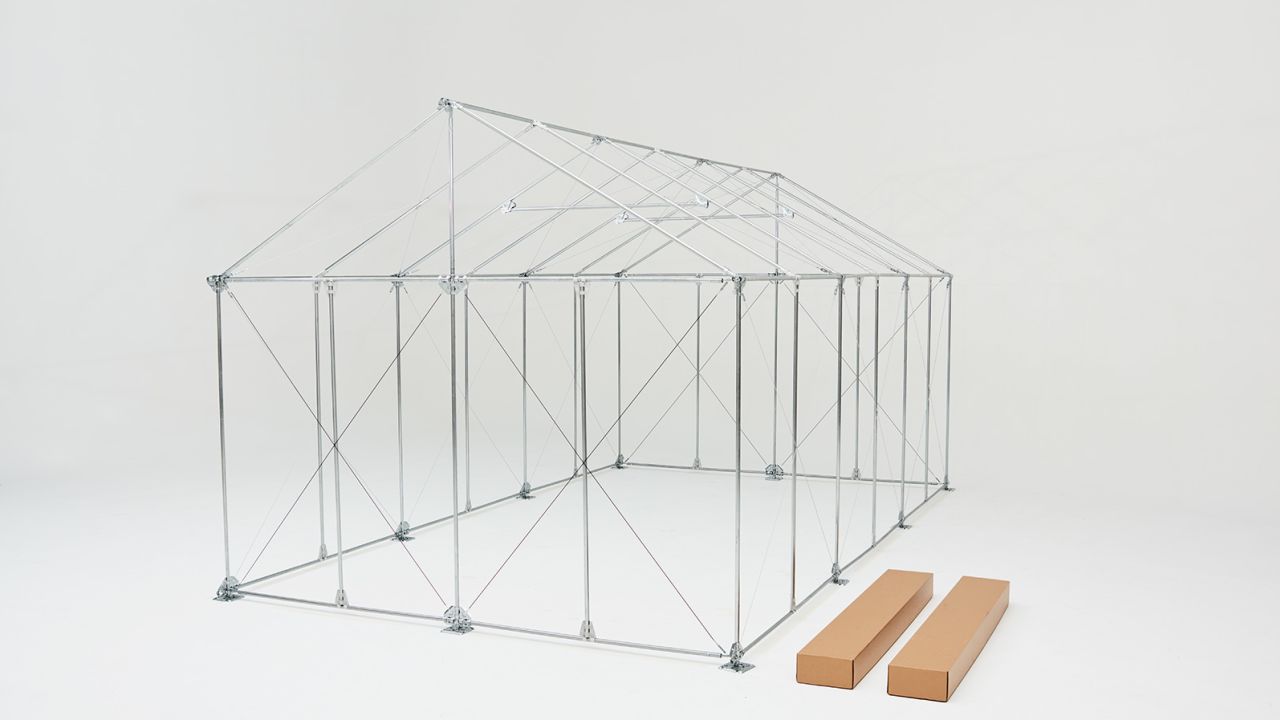
Better Shelter's IKEA-inspired "Structure" emergency shelter.
Better Shelter
Editor’s Note: Design for Impact is a series spotlighting architectural solutions for communities displaced by the climate crisis, natural disasters and other humanitarian emergencies.
Editor’s Note: Design for Impact is a series spotlighting architectural solutions for communities displaced by the climate crisis, natural disasters and other humanitarian emergencies.
CNN —
In June last year, Gita Kumari Bhumik and her family lost their home to flooding in India’s northeastern Assam state. Heavy rainfall that summer affected more than 5 million people, and the 44-year-old was among hundreds of thousands of those displaced across in the region.
“We lost everything,” Bhumik told CNN, via a translator, in a phone interview.
With so many left homeless, officials and NGOs rushed to provide shelter. Rather than sending tents, however, Indian nonprofit SEEDS partnered with Sweden’s Better Shelter to distribute over 100 of its IKEA-inspired temporary houses.
Like IKEA furniture, Better Shelter’s homes come in flat packages that can be easily shipped and assembled in a matter of hours, without the need for tools or electricity. Each unit comprises a modular frame and is completed using local materials, such as bamboo or timber, before being equipped with a lockable door and solar-powered lamp.
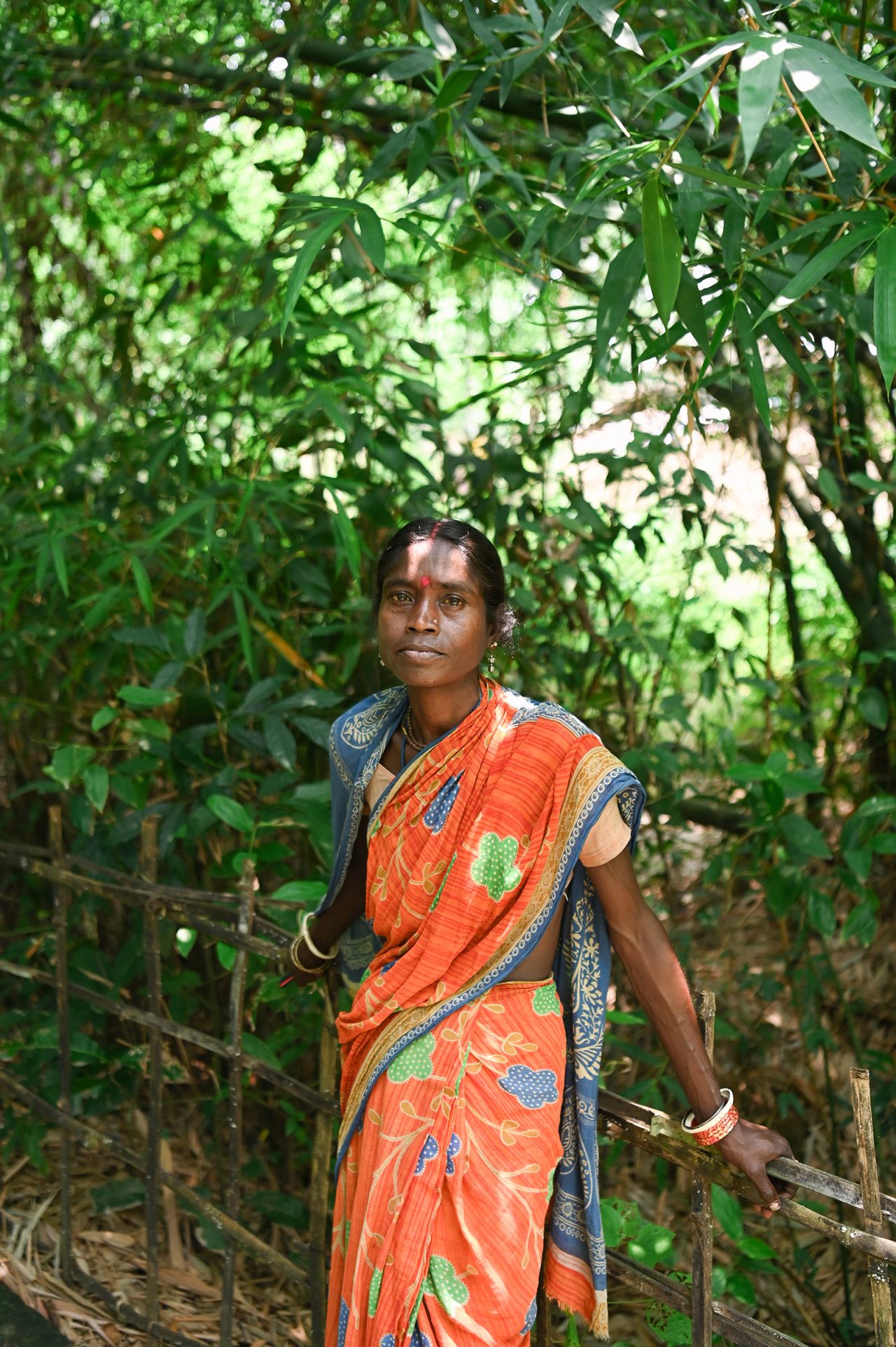
Gita Kumari Bhumik, photographed outside her new home in Assam's Kalain region.Sahiba Chawdhary
Bhumik said she and her family moved in within five to six days of learning they had been allocated a shelter. “It’s been our home since,” she said.
Rethinking emergency response
Better Shelter says it has delivered over 80,000 temporary shelters to more than 80 countries since 2013. The structures have served as homes, clinics and classrooms, as well as community buildings.
The units usually comprise a modular frame that can be completed using locally-sourced materials such as bamboo or timber, before being equipped with a lockable door and solar-powered lamp.
The organization’s managing director, Johan Karlsson, hopes to move away from makeshift tents by giving displaced people homes that last longer than six or 12 months.
“Most of us think of camps as temporary spaces, but the truth is, many people end up spending years to decades there,” he told CNN in a phone interview.
The modular units, he said, offer “not just better safety but protection and dignity, too.”
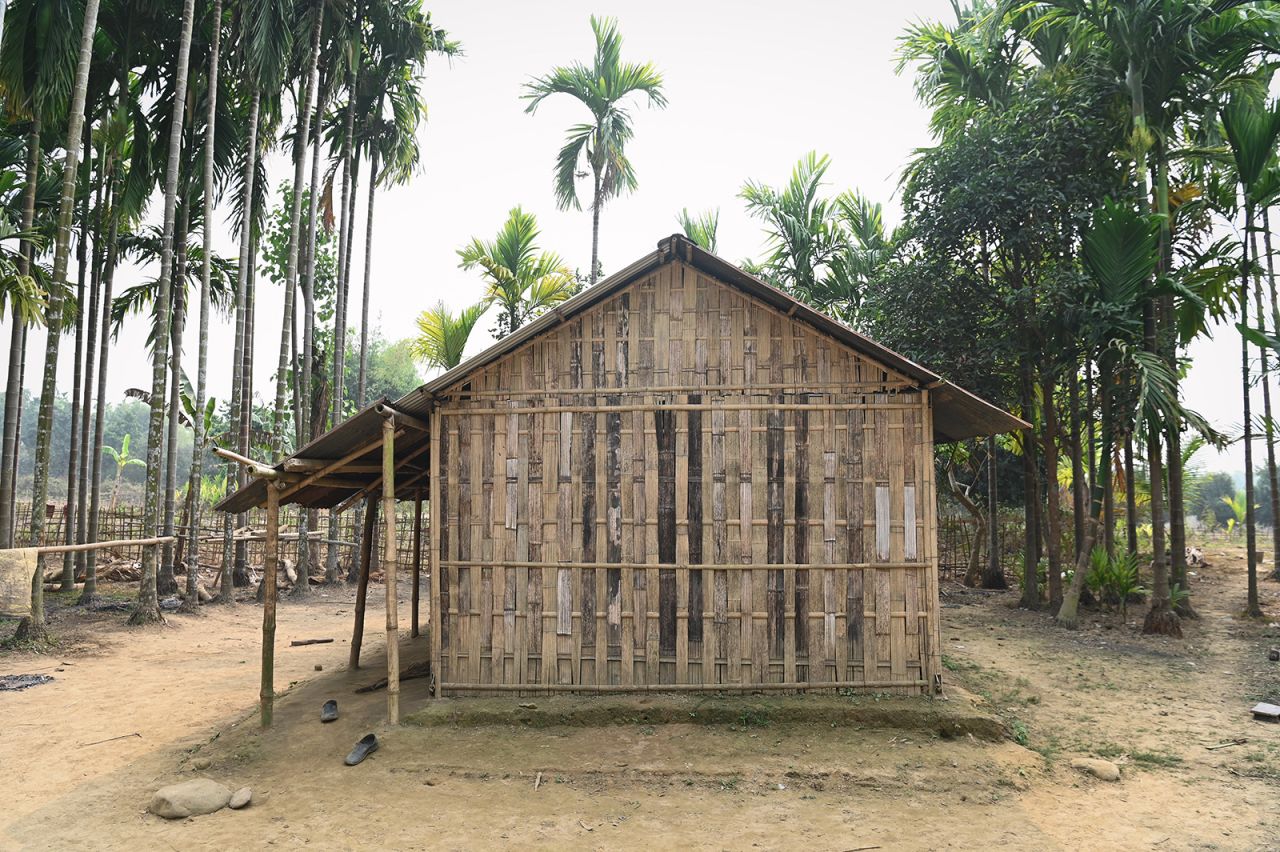
After losing his house in the devastating floods in Assam last year, 73-year-old Girindra Bhakti upgraded his Better Shelter home — which he shares with his grandchildren — using local materials.Sahiba Chawdhary/Better Shelter
Karlsson began developing the concept for Better Shelter’s housing as a freelance designer in 2010, when a small aid project asked him to improve the design of its disaster relief tents.
“It struck me how outdated and flimsy they were, considering they were supposed to offer refugees a home,” he recalled. “Those tents just weren’t designed to last that long. So I started thinking of alternatives.”
IKEA’s flat packing immediately came to mind.
“IKEA has long had the ‘know-how’ on how to create modularized constructions, packaging and materials,” said Karlsson. “Reaching out to them for support felt like the obvious thing to do.”
The IKEA Foundation is now his project’s main backer. With the Swedish multinational’s help, Karlsson and a small team of designers and engineers created a series of flat-pack emergency shelters, which they launched in Ethiopia in 2013.
Look inside the world’s largest 3D-printed neighborhood in Texas
These original 188-square-foot modules could be assembled, without tools, in four hours. They could accommodate up to five people and had an expected lifespan of three years, though Karlsson said that many were still standing after five.
“I like to think they have challenged the way emergency aid can be provided,” he said.
The Better Shelter team also spent time in a UN refugee camp in Iran and conducted interviews with Somali refugees in northern Kenya before completing its first shelters.
“Relying on people’s feedback is essential,” said Karlsson. “Every person and situation is different, but if there’s no dialogue with those on the ground, then you’re never going to make a successful prototype.”
One common request from refugees was for more privacy — the ability to simply close their doors. Another was that damage to their new homes was easy to repair.
“From the get-go, we’ve designed the units in a way that means they can be fixed, upgraded and even expanded,” Karlsson said. “It’s all about thinking long-term, rather than just about the immediate emergency.”
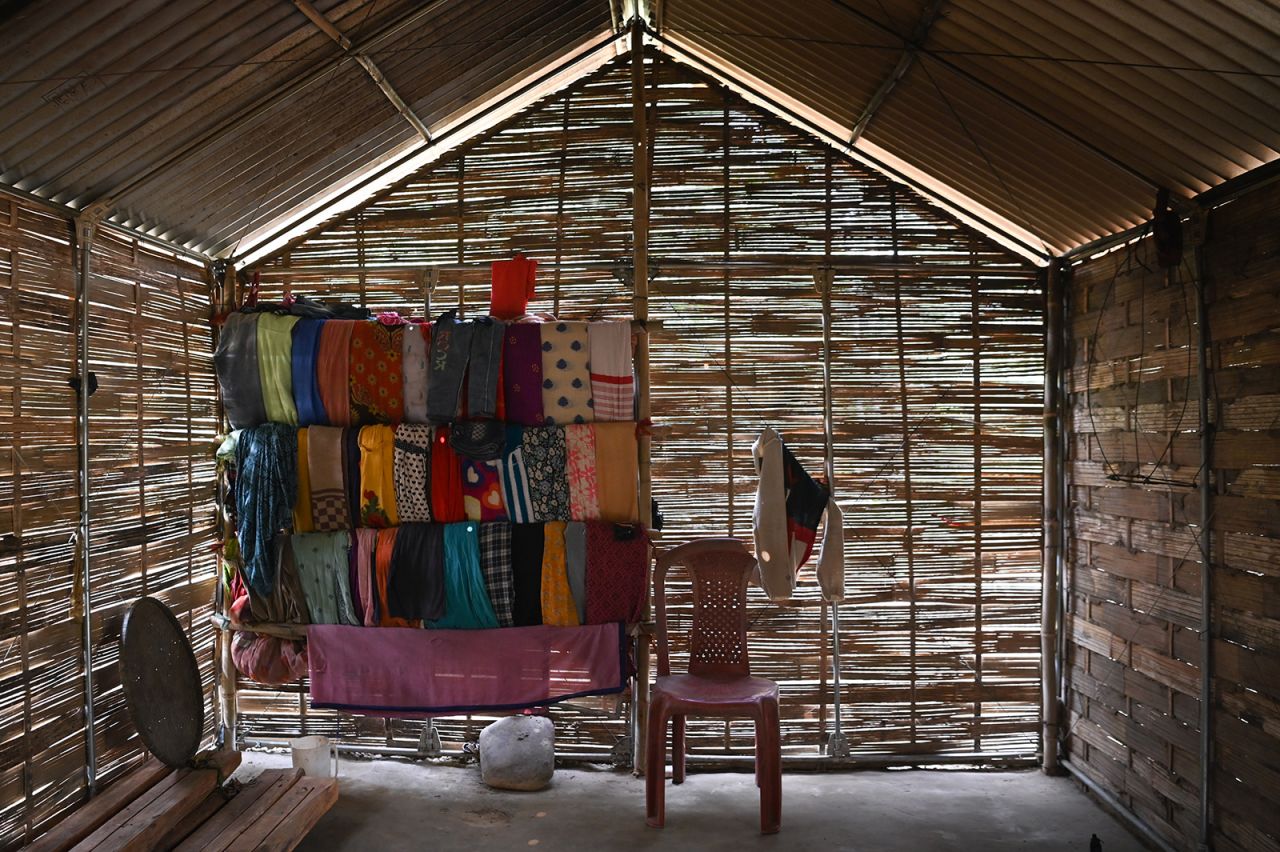
Inside one of the 80,000 temporary units that Better Shelter has distributed since 2013.Sahiba Chawdhary/Better Shelter
Scalable, adaptable and local
In 2021, Better Shelter introduced its latest modular design: Structure. Bhumik lives in a version of it. Designed to last a decade, the units can be assembled, disassembled and set up elsewhere in around two hours.
Structure is also the NGO’s most afforable design yet.
“One of the main issues we have with our other modules is that they can be quite costly — up to 1,500 euros (around $1,630) each,” said Karlsson. At around $365, Structure costs a lot less.
As its name suggests, Structure is essentially a bare-bones frame.
It can, at first, be covered with plastic sheeting and later strengthened with local materials to help people “create a more permanent shelter over time,” Karlsson said.
Floating architecture isn’t the future. It’s already here
Better Shelter lets on-the-ground partners like SEEDS decide which local materials are best suited to complete the homes. Choices vary depending on the environment, climate, local building techniques and available resources. In Assam, most are reinforced with bamboo and plastered with mud; in Afghanistan wood panels fend off the freezing winters; and in Rwanda, straw mats on the roof provide better insulation.
“Working with what’s available in each context not only boosts the local economy, but also makes maintenance and repair a lot easier,” said Karlsson. “We’re stepping in as little as possible.”
And where Karlsson and his team have stepped away, the residents are stepping up.
“From day one, you can see that people tend to decorate (their homes), putting fabrics in or adding their personal touches to them; adding a veranda to get some shade,” said Karlsson.
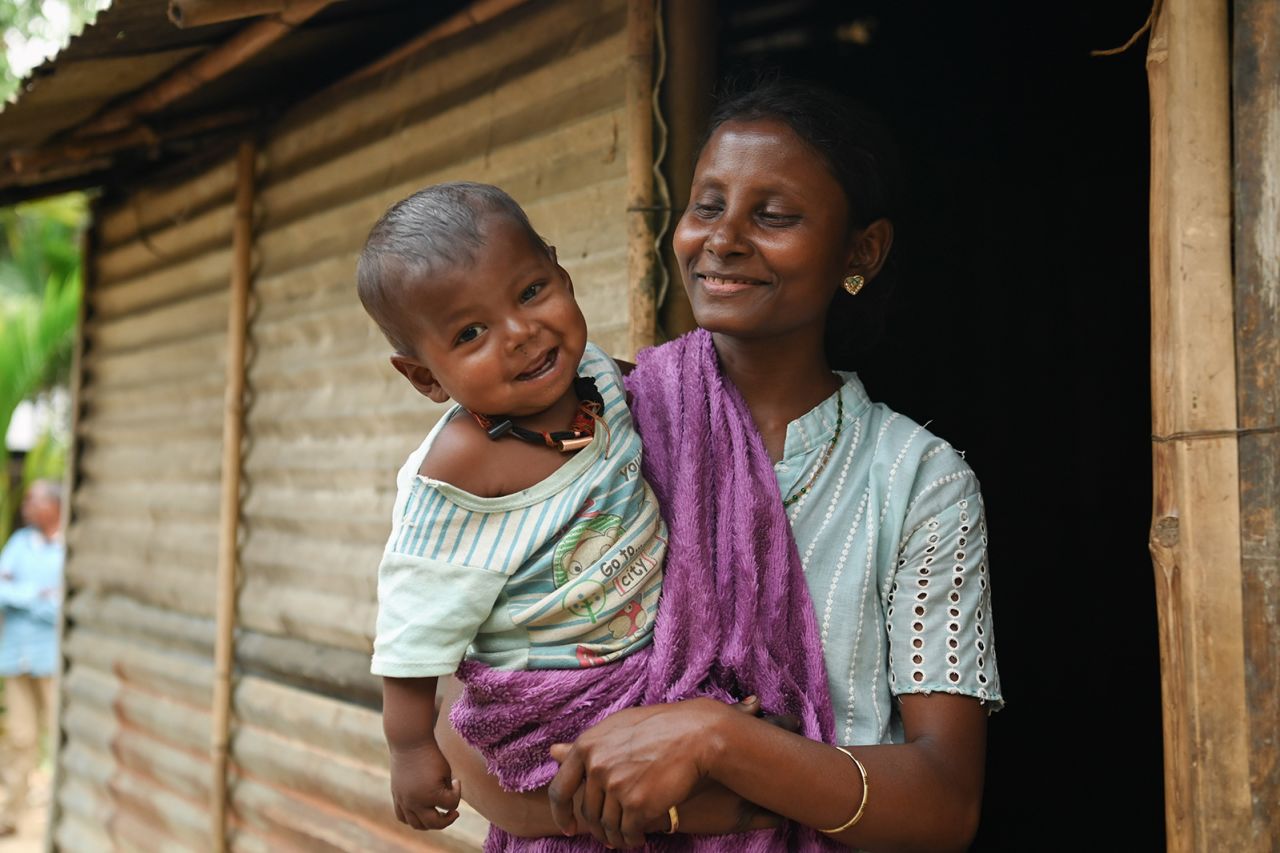
Geeta Bhumik (no relation to Gita Kumari Bhumik) and her daughter at their home in Assam. Her shelter was upgraded with bamboo, aluminum sheeting and mudpack, a mixture of mud and cow dung.Sahiba Chawdhary/Better Shelter
Inside Bhumik‘s house there are shrines to Hindu gods, and a coop to protect the family’s chickens from bad weather and predators. Her husband is also currently working on an extension to the main shelter. She doesn’t see the family leaving anytime soon.
“I consider this our home,” she said. “We feel safe here, and have had no problems, despite the recent rain.”
Moving towards decarbonization
In 2022, the world saw its largest yearly increase in the number of displaced people, according to the UNHCR. By the end of last year, the number of forcibly displaced people in the world reached 108.4 million. That is 19 million people more than the year before, and a total number greater than the populations of Ecuador or the Netherlands.
These displacements are often the result of persecution, conflict, violence, human rights violations, but climate change has increasingly become a major driver. The Institute for Economics & Peace (IEP), a Sydney-based think tank estimates that 1.2 billion people could be displaced globally by 2050 due to climate change and natural disasters.
“Sadly, there will only be more need for housing like ours,” said Karlsson.
Better Shelter’s next biggest challenge is decarbonization. Most of its shelters are made from plastic, as Karlsson says it’s still the best material in terms of weight, durability and cost. But he is aware of the material’s environmental impact and is looking to introduce more recycled and locally sourced parts.
Pricing, too, remains an issue. Better Shelter’s units, including Structure, continue to be more expensive than tents, and for this reason many NGOs choose not to use them, according to Karlsson.
“It takes time to embrace a new solution, and we certainly have to work on cost efficiency and more scalability,” he said. “But it’s in our books. I think that’s a responsibility we have as designers and architects.”
No comments:
Post a Comment